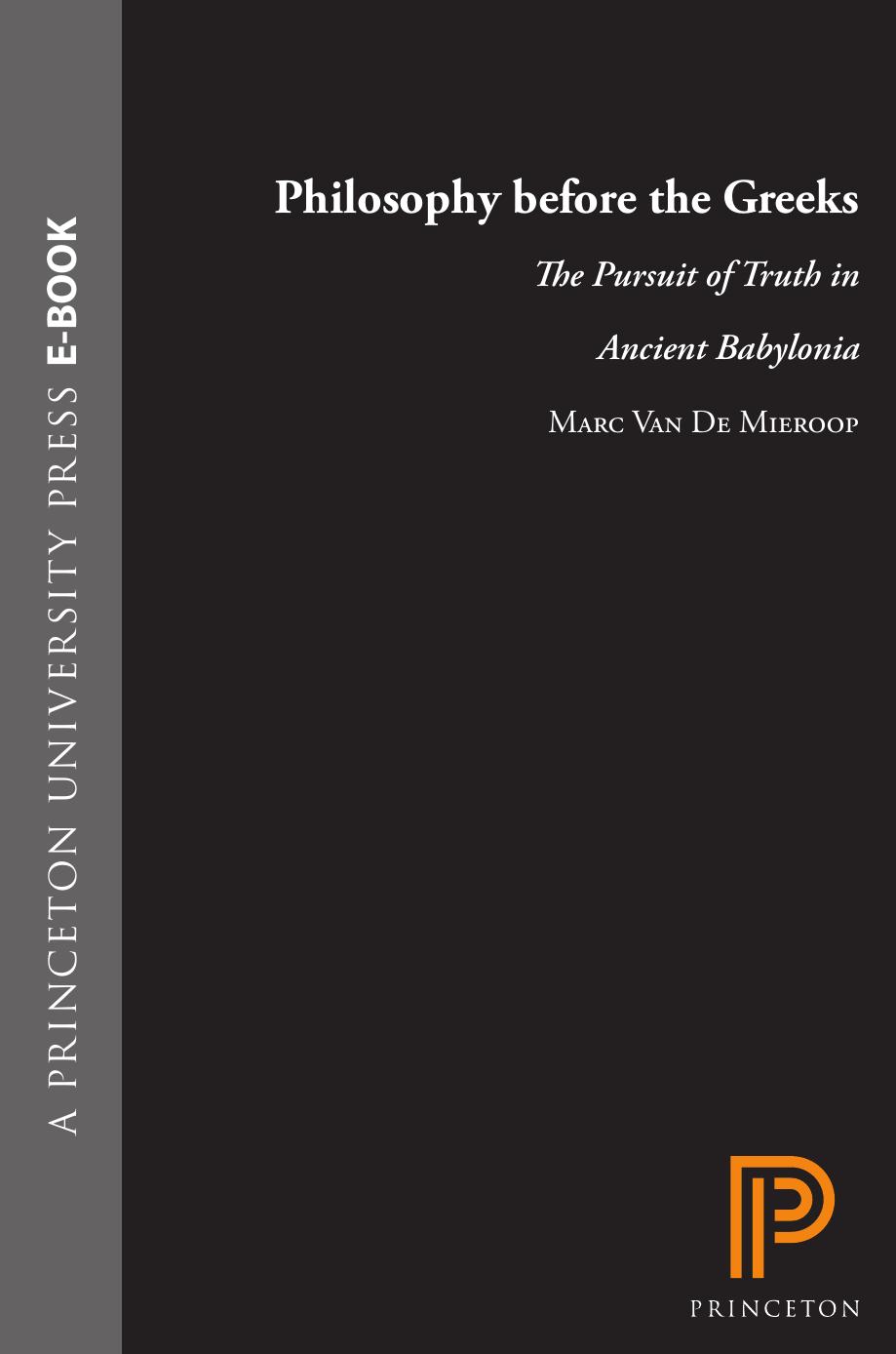Philosophy before the Greeks by Van De Mieroop Marc;

Author:Van De Mieroop, Marc;
Language: eng
Format: epub, pdf
Publisher: Princeton University Press
Published: 2015-04-14T04:00:00+00:00
CHAPTER 7
The Philosopher-King
In the previous chapter I spoke of a history of the legal genre in which the authors of law codes were aware that they participated in a tradition and knew of earlier examples. There is little doubt that especially those of the late third and early second millennia based themselves on existing codes and reused and elaborated them, while later authors—not only in Babylonia and Assyria but also in other Near Eastern areas—knowingly imitated the format, which was probably familiar to them through scholarly copies of extracts. The overall organization of three of the four earliest codes, those of Ur-Namma, Lipit-Ishtar, and Hammurabi, is so similar, with prologues and epilogues framing the lists of laws, that it is hard to imagine this was not considered to be generic. It is possible that the surviving manuscripts of the other law collection, the Laws of Eshnunna, were copied from a monument with a similar structure. The Middle Assyrian and Neo-Babylonian laws seem to have had different aims than the earlier Babylonian codes, but they retained their approach toward legal formulation.
The choice of cases to be addressed in the laws similarly shows a repetition of earlier codes. Events that are unlikely to have occurred regularly in real life, such as the killing of men and animals by an ox running amok, are included in several codes.1 Some laws replicate earlier ones almost verbatim. Hammurabi’s § 160 phrases the case where the father of the bride-to-be breaks the engagement in the same way as the Code of Lipit-Ishtar § 29, translating the Sumerian into Akkadian. Later versions regularly expand on earlier ones, and certainly the size of the law collections increased over time: Hammurabi’s code is much longer than all previous ones. But a process of elaboration is also visible in individual paragraphs. Paragraph 136 of the Code of Hammurabi, for example, rewrites § 30 of the earlier Code of Eshnunna: a man who renounces his city and runs away cannot reclaim his remarried wife if he returns to her later on. Hammurabi increased the length of the text by two-thirds, something scholars have criticized as reducing its literary appeal and clarity.2 The Middle Assyrian Laws, with their drawn-out paragraphs, seem to represent the culmination of the process of elaborating the contents of a law. We see thus parallels with other genres of writing already discussed. As was true for literature and scholarship such as lexicography, authors adhered to an existing tradition but had the liberty to introduce changes, most often expanding the texts. But while in other genres the structure of the texts remained in use for a long period of time and in multiple manuscripts that could alter details, in the codes the entire text was reworked under each king who commissioned them. The overall character of the codes and the manner of formulation remained the same, but the authors felt free to change the order and selection of paragraphs. We will focus on the elements that remained standard, however.
Download
Philosophy before the Greeks by Van De Mieroop Marc;.pdf
This site does not store any files on its server. We only index and link to content provided by other sites. Please contact the content providers to delete copyright contents if any and email us, we'll remove relevant links or contents immediately.
| Anthropology | Archaeology |
| Philosophy | Politics & Government |
| Social Sciences | Sociology |
| Women's Studies |
The remains of the day by Kazuo Ishiguro(8395)
Tools of Titans by Timothy Ferriss(7815)
Giovanni's Room by James Baldwin(6810)
The Black Swan by Nassim Nicholas Taleb(6770)
Inner Engineering: A Yogi's Guide to Joy by Sadhguru(6441)
The Way of Zen by Alan W. Watts(6289)
Asking the Right Questions: A Guide to Critical Thinking by M. Neil Browne & Stuart M. Keeley(5357)
The Power of Now: A Guide to Spiritual Enlightenment by Eckhart Tolle(5333)
The Six Wives Of Henry VIII (WOMEN IN HISTORY) by Fraser Antonia(5238)
Astrophysics for People in a Hurry by Neil DeGrasse Tyson(5002)
12 Rules for Life by Jordan B. Peterson(4161)
Housekeeping by Marilynne Robinson(4064)
The Ethical Slut by Janet W. Hardy(4040)
Skin in the Game by Nassim Nicholas Taleb(3968)
Double Down (Diary of a Wimpy Kid Book 11) by Jeff Kinney(3927)
Ikigai by Héctor García & Francesc Miralles(3895)
The Art of Happiness by The Dalai Lama(3847)
Skin in the Game: Hidden Asymmetries in Daily Life by Nassim Nicholas Taleb(3724)
Walking by Henry David Thoreau(3681)
